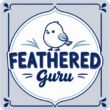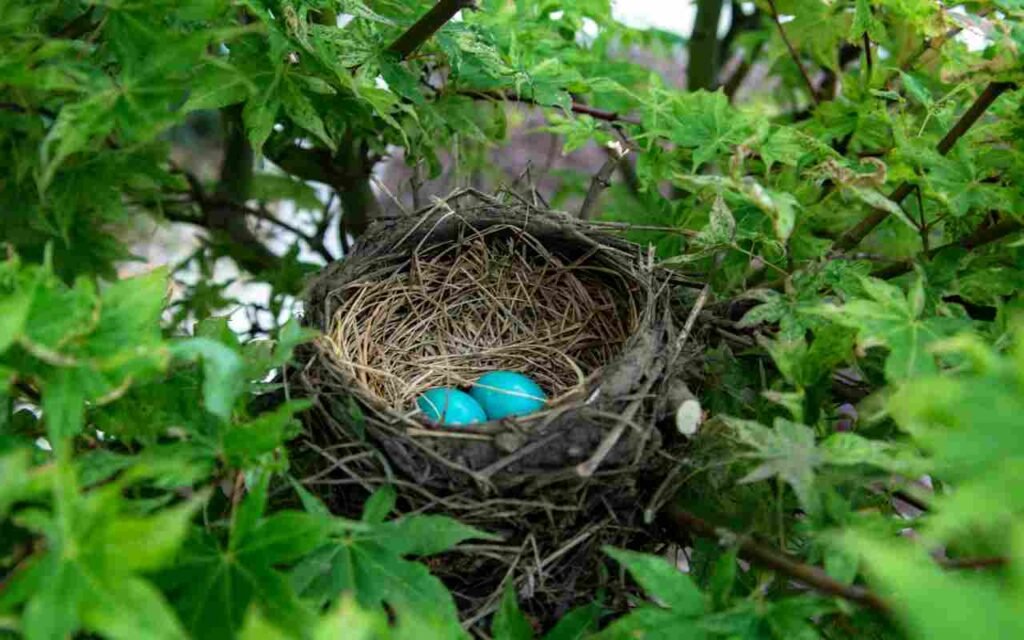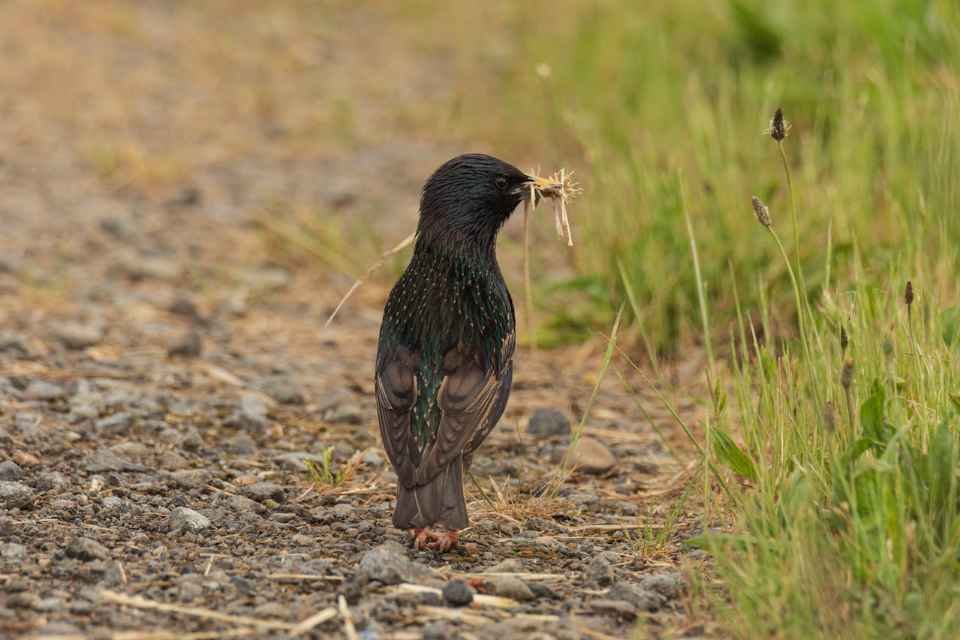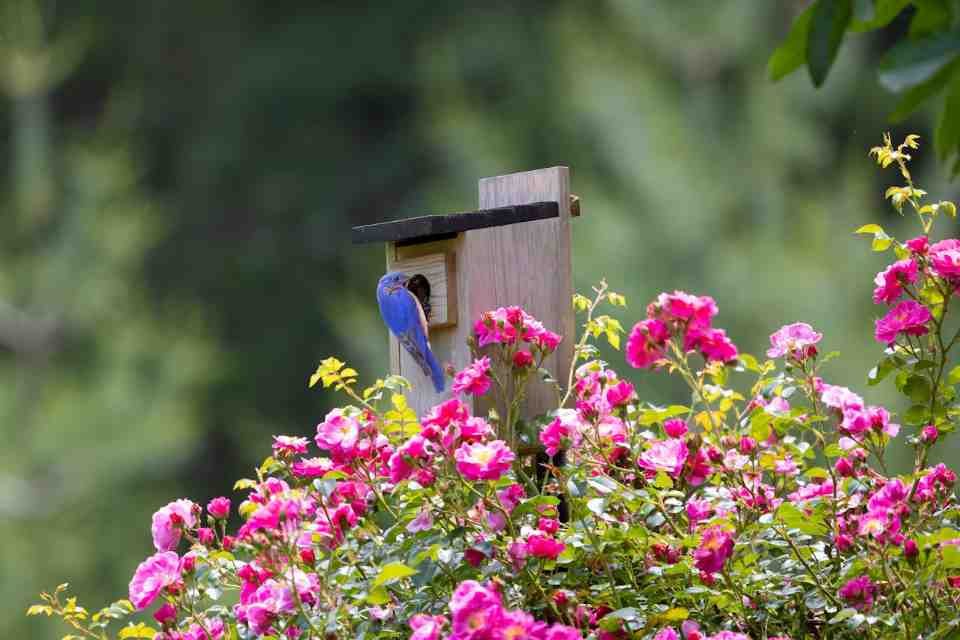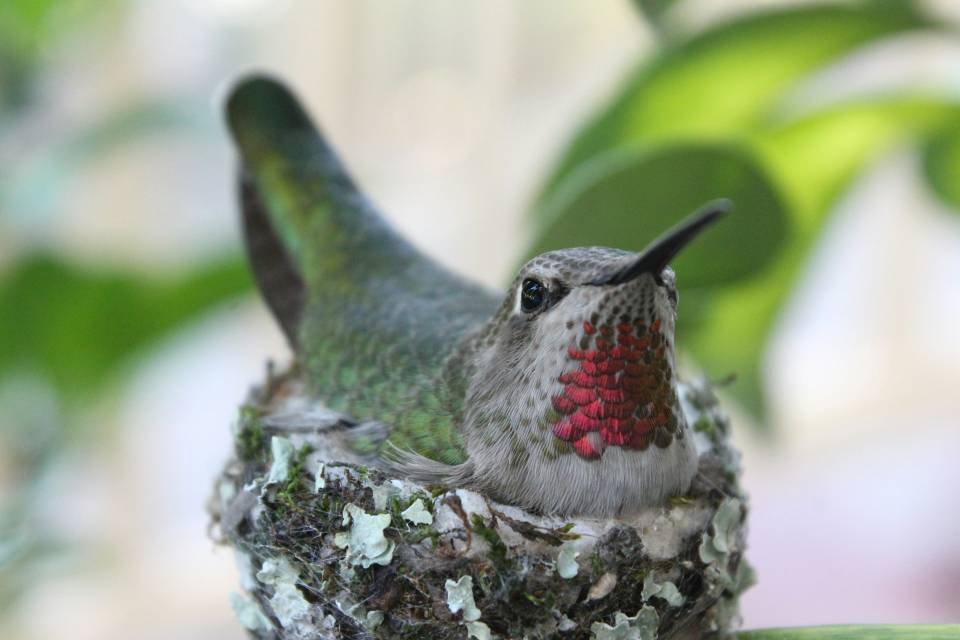Last spring, I caught my neighbor sneaking around his garden at dawn with binoculars and a notebook, looking like some sort of suburban spy 😳. Turns out he wasn’t plotting anything sinister – he was counting nesting birds and documenting their preferred spots.
That’s when it hit me: creating a bird-friendly garden isn’t just about throwing some seeds around and hoping for the best. It’s really about learning how to encourage birds to nest in your garden by offering the right mix of food, shelter, and safe spaces – and trust me, they’re pickier clients than you’d expect.
What Makes Gardens Irresistible to Nesting Birds
Ever notice how some gardens are bustling with bird activity while others remain eerily quiet? It’s not luck or magic – it’s strategic garden planning that addresses what birds actually need versus what we think looks pretty.
Successful bird gardens combine three essential elements: security, sustenance, and suitable nesting sites. Birds scout potential locations weeks before they commit to building, and they’re looking for neighborhoods that offer everything from nursery facilities to 24/7 security. Think of yourself as a property developer catering to a very specific demographic.
Understanding Bird Real Estate Preferences
Different bird species have wildly different housing requirements. Cavity-nesting birds like woodpeckers and chickadees want enclosed apartments, while cup nesters like robins prefer open-plan living with good views. Ground nesters? They’re the minimalists who just want a quiet spot with good camouflage.
I learned this the hard way when I mounted a gorgeous cedar birdhouse right in the center of my lawn. It looked perfect to me – prime location, great curb appeal. The birds? They completely ignored it for two seasons until I realized they wanted privacy, not a showcase home.
Creating the Foundation: Native Plants and Natural Landscaping
Why Native Plants Are Non-Negotiable
Here’s something that’ll change your entire approach to garden bird habitat: native plants support exponentially more insects than exotic species. And before you say “ew, bugs,” remember that insect-eating birds need those creepy crawlies to feed their babies.
A single native oak tree can support over 1,000 species of butterflies and moths during their caterpillar stage. That’s like opening an all-you-can-eat buffet specifically designed for hungry bird parents.
Compare that to most ornamental plants from the garden center, which might support a handful of insect species if you’re lucky. According to the National Wildlife Federation, oak trees support more caterpillar species than any other plant group in North America.
Top native plants for attracting nesting birds:
• Berry-producing shrubs (elderberry, serviceberry, native honeysuckle)
• Seed-producing flowers (coneflowers, black-eyed Susans, native sunflowers)
• Native trees (oaks, maples, dogwoods, native cherries)
• Grasses and sedges (provide both nesting materials and seeds)
Layered Landscaping: Think Like a Forest
Multi-level planting is your secret weapon for attracting diverse bird species. Nature doesn’t organize itself in neat rows, and neither should your garden if you want to maximize bird nesting opportunities.
Create distinct layers: canopy trees for high-nesting species, understory trees and large shrubs for mid-level nesters, small shrubs for ground-level species, and ground cover for those birds that prefer minimalist nesting situations.
I restructured my entire back garden using this principle three years ago. Instead of the traditional foundation plantings, I created dense shrub clusters with varying heights. The result? I went from hosting two bird species to eight different nesting pairs last season.
Water Features: The Ultimate Bird Magnet
Beyond Basic Bird Baths
Every bird garden guide mentions water, but most people get it wrong. Birds don’t want a decorative water feature that looks great in your Instagram photos — they want functional water sources that meet their practical needs.
According to BirdWatching Daily, adding movement, like a dripping jug or wiggler, to your bird bath can dramatically increase backyard bird visits overnight.
Effective water features for nesting birds:
• Shallow basins (1-2 inches deep maximum)
• Dripping or moving water (the sound attracts birds from surprising distances)
• Multiple water levels (different species prefer different depths)
• Easy escape routes (birds are paranoid about predators, rightfully so)
Maintenance That Actually Matters
Here’s where most people drop the ball with garden water sources: they set it up and forget about it. Stagnant water doesn’t just fail to attract birds – it can actually harm them by spreading diseases. According to the Audubon, unclean birdbaths can transmit avian diseases like salmonellosis and avian pox. For a safe and chemical-free approach, see our guide on how to clean a bird bath without chemicals.
I refresh my water sources every 2–3 days during nesting season and position them where I can easily see them from my kitchen window. This isn’t just for my entertainment (though watching birds bathe is surprisingly addictive) – it helps me monitor water levels and cleanliness.
Strategic Placement of Nesting Sites
Natural vs. Artificial Nesting Options
Should you focus on natural nesting sites or install birdhouses? IMO, the answer is both, but with a heavy emphasis on natural options. Artificial nest boxes can supplement natural sites, but they shouldn’t be your primary strategy.
Natural nesting site creation includes:
• Dense shrub plantings with thorny varieties for protection
• Dead tree branches (if safely positioned) for cavity nesters
• Brush piles and natural debris for ground-nesting species
• Native vines for birds that prefer woven nest structures
Birdhouse Placement That Actually Works
When you do install nest boxes, location matters more than the fancy design. I see gorgeous birdhouses failing because people prioritize aesthetics over avian practicality.
Successful birdhouse placement rules:
• Height varies by species (wrens like 4-6 feet, bluebirds prefer 4-5 feet)
• Face away from prevailing winds (usually southeast orientation works best)
• Provide nearby perches but not directly below entrance holes
• Space appropriately (most songbirds need 25+ feet between houses)
Seasonal Timing for Maximum Success
Bird nesting seasons vary by location, but most North American birds start scouting in late winter. Your garden preparation needs to happen before they begin house hunting, not after they’ve already chosen other neighborhoods.
I start my annual garden bird preparation in February, cleaning existing nest boxes, pruning shrubs to create better nesting structure, and ensuring water sources are ready for the season. By the time March rolls around, my garden is basically sending out “vacancy” signs in bird language.
Providing Essential Nesting Materials
What Birds Actually Want for Construction
Think birds just grab random twigs and call it good? Nesting material preferences are surprisingly specific, and providing the right supplies can make your garden irresistible to building birds.
Popular nesting materials include:
• Fine twigs and small branches (robins and thrushes love these)
• Soft materials like cotton, wool, or pet fur (for nest lining)
• String and yarn cut to 4-inch lengths (longer pieces can tangle birds)
• Natural fibers from ornamental grasses and native plants
Creating a Materials Station
I set up a nesting material station using an old suet feeder filled with bird-safe materials. The key word here is “bird-safe” – avoid synthetic materials, dryer lint, or anything treated with chemicals.
Last spring, I watched a house finch spend twenty minutes carefully selecting specific pieces of cotton batting from my materials station. She was pickier than me shopping for throw pillows, testing different pieces before settling on the perfect nest lining material.
Managing Predators and Creating Safe Spaces
The Predator Problem
Let’s talk about the elephant in the room (or should I say, the cat in the garden?). Predator management is crucial for successful bird nesting, and it goes way beyond just keeping Fluffy indoors.
Common garden predators include:
• Domestic and feral cats (the biggest threat to nesting birds, free-roaming cats kill an estimated 2.4 billion birds annually in the U.S., according to the American Bird Conservancy)
• Raccoons and opossums (excellent climbers and nest raiders)
• Snakes (surprisingly good at finding bird nests)
• Larger birds like crows and jays (nest predators themselves)
Creating Defensive Landscaping
Thorny shrubs are your best friend when it comes to protecting nesting birds. I plant roses, hawthorn, and native berry bushes strategically around potential nesting areas. Cats hate thorns, and most other predators prefer easier targets.
Predator deterrent strategies:
• Plant thorny shrubs around nest sites
• Install smooth pole baffles on birdhouse posts
• Create multiple escape routes from feeding and nesting areas
• Remove or modify easy climbing routes to elevated nests
Seasonal Garden Management for Nesting Success
Spring: Peak Nesting Season
Spring garden management requires a delicate balance between maintenance and minimal disturbance. You want to keep your garden healthy without disrupting active nests.
Avoid heavy pruning during nesting season (March through August in most areas). I learned this lesson when I accidentally disturbed a cardinal nest while trimming my forsythia. The parents abandoned the nest, and I felt terrible for weeks.
Summer: Supporting Growing Families
Mid-season garden care focuses on maintaining water sources and food supplies while young birds are growing. This is when insect populations peak, making it crucial to avoid pesticides completely.
Keep water sources clean and full, deadhead flowers to encourage continued blooming (more seeds for fledglings), and resist the urge to clean up too aggressively. Those “messy” areas often harbor the insects that parent birds desperately need.
According to Beyond Pesticides, even low levels of pesticides can reduce insect populations that parent birds rely on to feed their chicks.
Fall and Winter: Planning for Next Year
Off-season preparation sets the stage for next year’s nesting success. Leave seed heads on native plants, maintain brush piles for winter shelter, and plan any major garden modifications for late fall or early winter.
This is when I evaluate what worked and what didn’t in my bird garden design. Which plants attracted the most nesting activity? Where did I see the most successful fledglings? FYI, keeping a simple garden journal makes this evaluation much easier.
Species-Specific Attraction Strategies
Attracting Different Types of Nesters
Songbird species have remarkably different preferences, and understanding these differences helps you create targeted attraction strategies.
For cavity nesters (woodpeckers, chickadees, nuthatches):
• Provide or maintain dead wood when safely possible
• Install appropriate nest boxes with correct entrance hole sizes
• Plant berry-producing trees for year-round food sources
For open cup nesters (robins, cardinals, mockingbirds):
• Create dense shrub plantings for nest concealment
• Provide mud sources for robin nest construction
• Plant native trees with horizontal branching patterns
The Hummingbird Special Case
Hummingbird nesting requires a completely different approach. These tiny architects build nests about the size of ping pong balls using spider silk as construction adhesive. You can’t provide nest boxes for hummingbirds, but you can create irresistible habitat.
Plant nectar-rich native flowers in succession for continuous blooms, avoid pesticides religiously (hummingbirds need tiny insects for protein), and provide fine materials like plant down or pet fur for nest construction.
I planted a native trumpet vine along my fence three years ago specifically for hummingbirds. Now I have at least two nesting pairs each season, and watching them build their impossibly tiny nests never gets old 🙂
Troubleshooting Common Garden Bird Problems
When Birds Aren’t Nesting Despite Your Efforts
Low nesting activity can be frustrating, especially when you’ve put significant effort into creating bird-friendly gardens. Common issues include insufficient cover, too much human activity, or missing essential resources.
Troubleshooting checklist:
• Evaluate predator pressure in your area
• Assess whether you’re providing year-round resources
• Check if neighboring properties offer better alternatives
• Consider whether pesticide use in surrounding areas affects insect populations
Dealing with Aggressive or Problematic Species
Sometimes territorial birds can actually deter other species from nesting in your garden. House sparrows, European starlings, and occasionally even native species like mockingbirds can monopolize resources.
The solution isn’t to eliminate these birds, but to create enough diverse habitat that multiple species can coexist. Expand your garden’s capacity rather than trying to control which birds use it.
Long-term Garden Development for Bird Communities
Building Generational Bird Habitat
Creating a sustainable bird garden means thinking beyond individual nesting seasons. Successful bird gardens often take 3–5 years to reach their full potential as plants mature and bird communities establish. According to the Xerces Society, native plantings generally take multiple growing seasons to fully establish and provide maximum wildlife benefits.
I’ve been working on my garden for six years now, and the difference is remarkable. What started as a modest project with a few native plants has become a neighborhood hotspot for nesting birds. This year, I counted twelve different species raising young within a 100-foot radius of my house.
Community Impact and Neighborhood Networks
Urban bird conservation works best when neighbors coordinate efforts. Individual gardens become much more effective when they connect to form larger habitat corridors.
Talk to your neighbors about creating bird-friendly spaces. Share successful plants, coordinate nesting box placement to avoid overcrowding, and work together on predator management strategies. You might be surprised how many people are interested once they see your results.
Conclusion
Creating a garden that attracts nesting birds isn’t about perfecting a Pinterest-worthy landscape – it’s about understanding what birds actually need and designing your space accordingly. Native plants, reliable water sources, safe nesting sites, and predator management form the foundation of any successful bird garden.
The real reward isn’t just the increased bird activity, though that’s certainly exciting. It’s the deeper connection you develop with the natural world right outside your door. When you watch a pair of cardinals successfully raise their young in the shrub you planted three years ago, you realize you’ve become part of something much larger than backyard decorating.
Start small, be patient, and remember that birds are looking for long-term housing, not short-term rentals. Build it thoughtfully, and they really will come – along with all the wonder and entertainment that comes with hosting nature’s most charming neighbors.
